
Paul Klee (1911)
American composer Gunther Schuller (1925-2015) took the Swiss artist Paul Klee (1879-1940) as his inspirational source for his 1959 orchestral work 7 Studies on Themes of Paul Klee. The seven works he chose were created between 1912 and 1933 and captures a wide range of Klee’s artistic output in painting and drawing. The work was one of Schuller’s most popular pieces and was an example of Schuller’s ‘Third Stream’ movement pieces that fused jazz and classical music, as well as showcasing his interest in the arts.
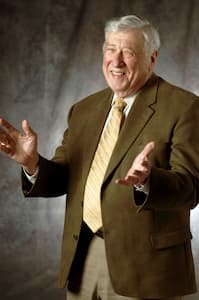
Gunther Schuller
The work was written for the Minneapolis Symphony Orchestra and its conductor Antal Doráti.
In Antique Harmonies, Schuller uses the block-like shapes in variation that Klee created this painting from. The bright yellow center is mirrored in the music in the bright trumpets and high strings. To capture the idea of ‘antique’, Schuller uses medieval cadences based on open fifths. Klee was inspired by a trip to North Africa for this work.
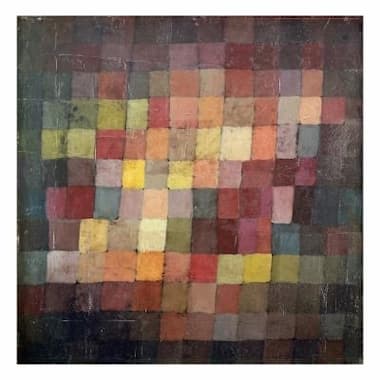
Klee: Antique Harmonies (1925)
Gunther Schuller: 7 Studies on Themes of Paul Klee: No. 1. Antike Harmonien (Antique Harmonies) (Minneapolis Symphony Orchestra; Antal Doráti, cond.)
Abstract Trio (1923) is played by trios of instruments, from bright woodwinds, the darker and grainier muted brass and bassoon, and finally the very dark and sombre low woodwinds and low brass. Klee’s images also suggest instruments and it should be noted that Klee himself was an accomplished violinist.
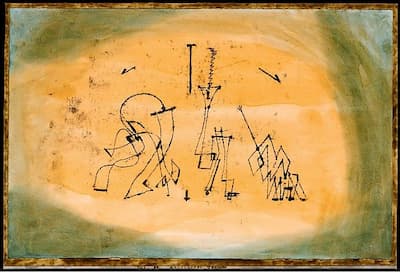
Klee: Abstract Trio (1923) (Metropolitan Museum of Art)
Gunther Schuller: 7 Studies on Themes of Paul Klee: No. 2. Abstraktes Trio (Abstract Trio) (Minneapolis Symphony Orchestra; Antal Doráti, cond.)
Schuller’s Third Stream style comes into play in Little Blue Devil (1933). The abstract/Cubist head is given a ‘perky, angular theme.’ However, the usual 12-bar blues progression is shortened to 9-bar blues, and then is distorted. The use of brass and low-register clarinets maintains the idea of ‘blue.’
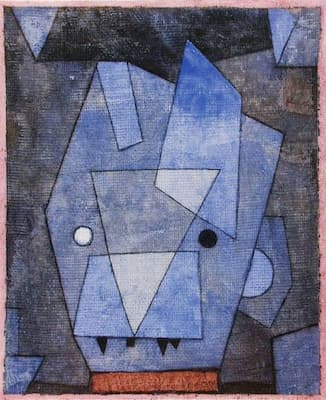
Klee: Little Blue Devil (1933)
Gunther Schuller: 7 Studies on Themes of Paul Klee: No. 3. Kleiner blauer Teufel (Little Blue Devil) (Minneapolis Symphony Orchestra; Antal Doráti, cond.)
The orchestra twitters to illustrate Twittering Machine (1922). The image of a perch, turned by a handle, to which various birds are tethered is simple enough. The pit over which they are sitting, however, shows their danger. The birds sit on a blue background, but the encroaching pink stain closes in their world.

Klee: Twitter Machine (1922) (New York: Museum of Modern Art)
Gunther Schuller: 7 Studies on Themes of Paul Klee: No. 4. Die Zwitschermaschine (The Twittering-Maschine) (Minneapolis Symphony Orchestra; Antal Doráti, cond.)
The Arab town bakes under the unrelenting sun. The viewer floats above and to Schuller, would have heard snatches of music: chanted melodies, a melancholy flute, a nasal double-reed, throbbing drums. Schuller notes that in creating this movement, he ‘used either authentic Arab folk material or very close adaptations thereof.’

Klee: Arab Village (1923)
Gunther Schuller: 7 Studies on Themes of Paul Klee: No. 5. Arabische Stadt (Arab Village) (Minneapolis Symphony Orchestra; Antal Doráti, cond.)
Rather than trying to illustrate the drawing of An Eerie Moment (1912) with 2 men? One man doing somersaults in front? 2 dogs? – Schuller chose to make music out of the title. The original German word translated as ‘eerie,’ ‘unheimlicher,’ not only can mean ‘eerie’ but also ‘unearthly’ or even ‘terrifying.’ The tension of the beginning of the work culminates in two outbursts before sinking back into a perilous calm.

Klee: An Eerie Moment (1912)
Gunther Schuller: 7 Studies on Themes of Paul Klee: No. 6. Ein unheimlicher Moment (An Eerie Moment) (Minneapolis Symphony Orchestra; Antal Doráti, cond.)
The unsettled feeling of An Eerie Moment is carried through to the final movement, Pastorale (1927). Looking almost like an ancient manuscript, the painting illustrates Klee’s variation technique. If you look at Klee’s work line by line and translate it into musical ideas, you can see several rhythmic-melodic shapes (waves, arches) that recur on different levels and at different speeds. Schuller uses the pastoral timbres of the clarinet, English horn, and French horn to trace out their lines above a very suspended-feeling sounds.
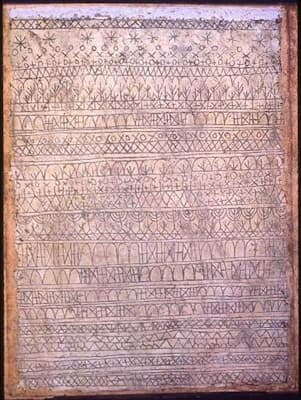
Klee: Pastorale (1927) (New York: Museum of Modern Art)
Gunther Schuller: 7 Studies on Themes of Paul Klee: No. 7. Pastorale (Minneapolis Symphony Orchestra; Antal Doráti, cond.)
It’s clear that Klee had an affinity with music and theatre. We noted above that he was a trained violinist. Klee’s son Felix noted that of the more than 900 works Klee recorded in his catalogue, more than 500 refer to the theatre, masks, or music.
For more of the best in classical music, sign up to our E-Newsletter




